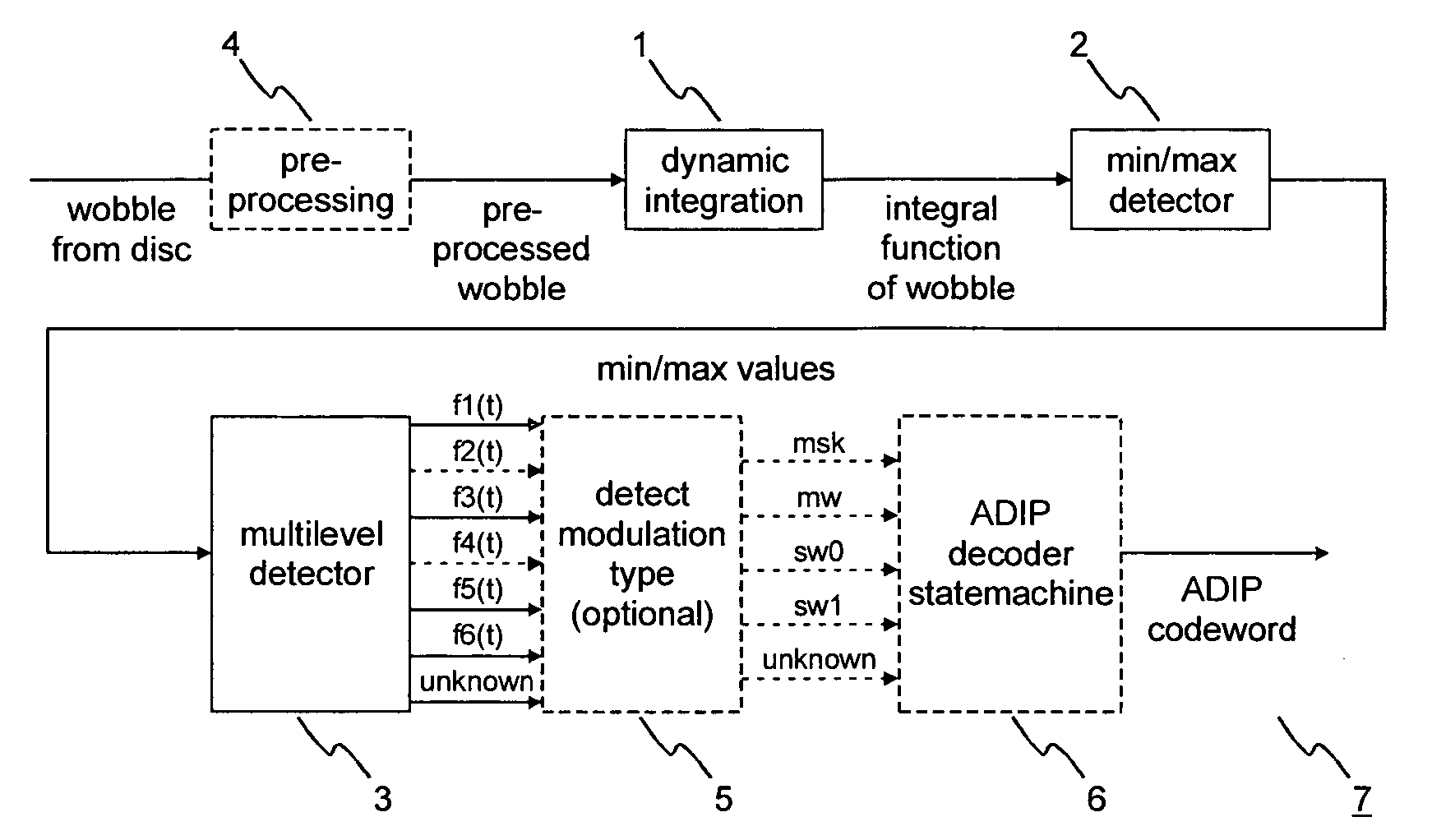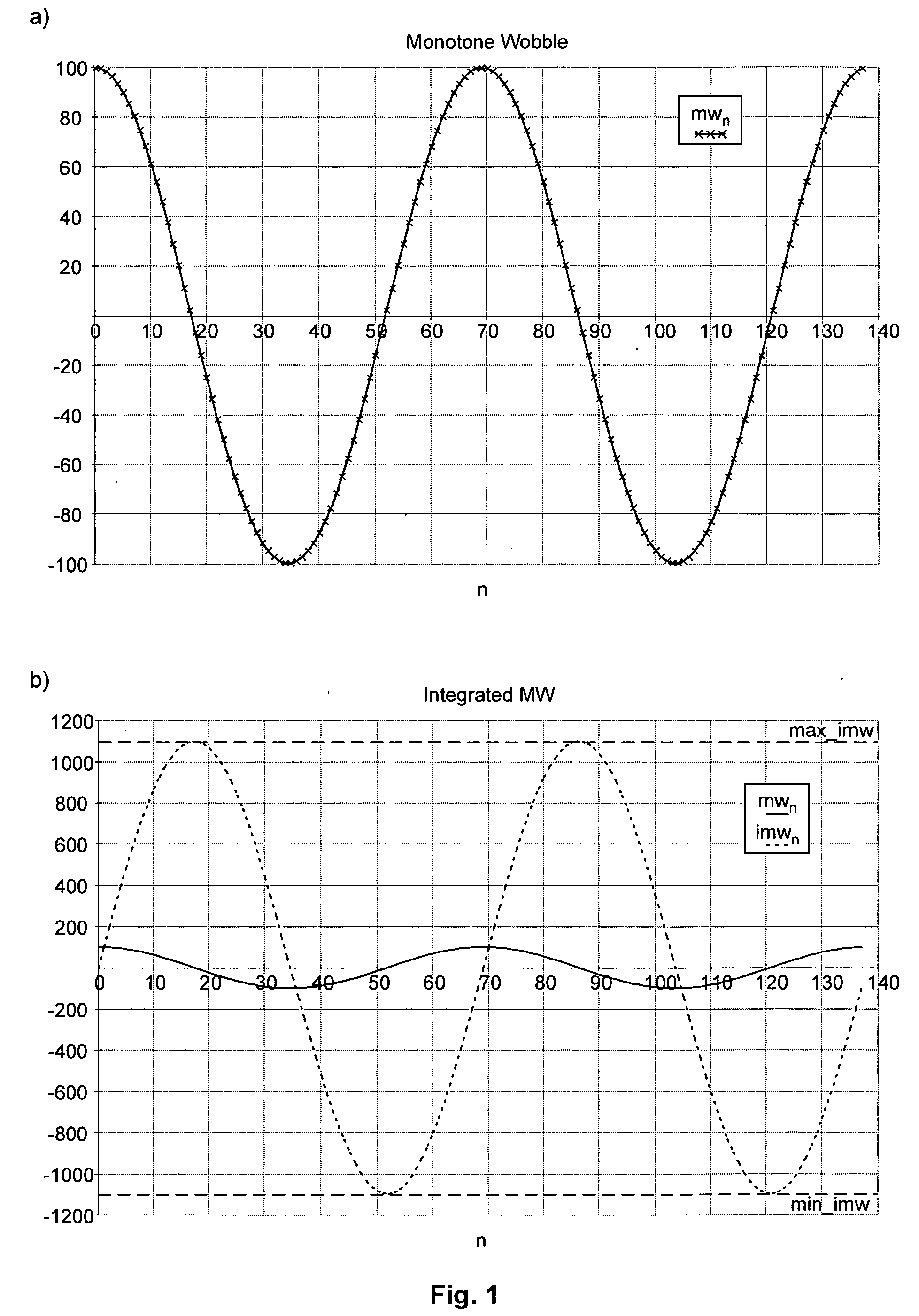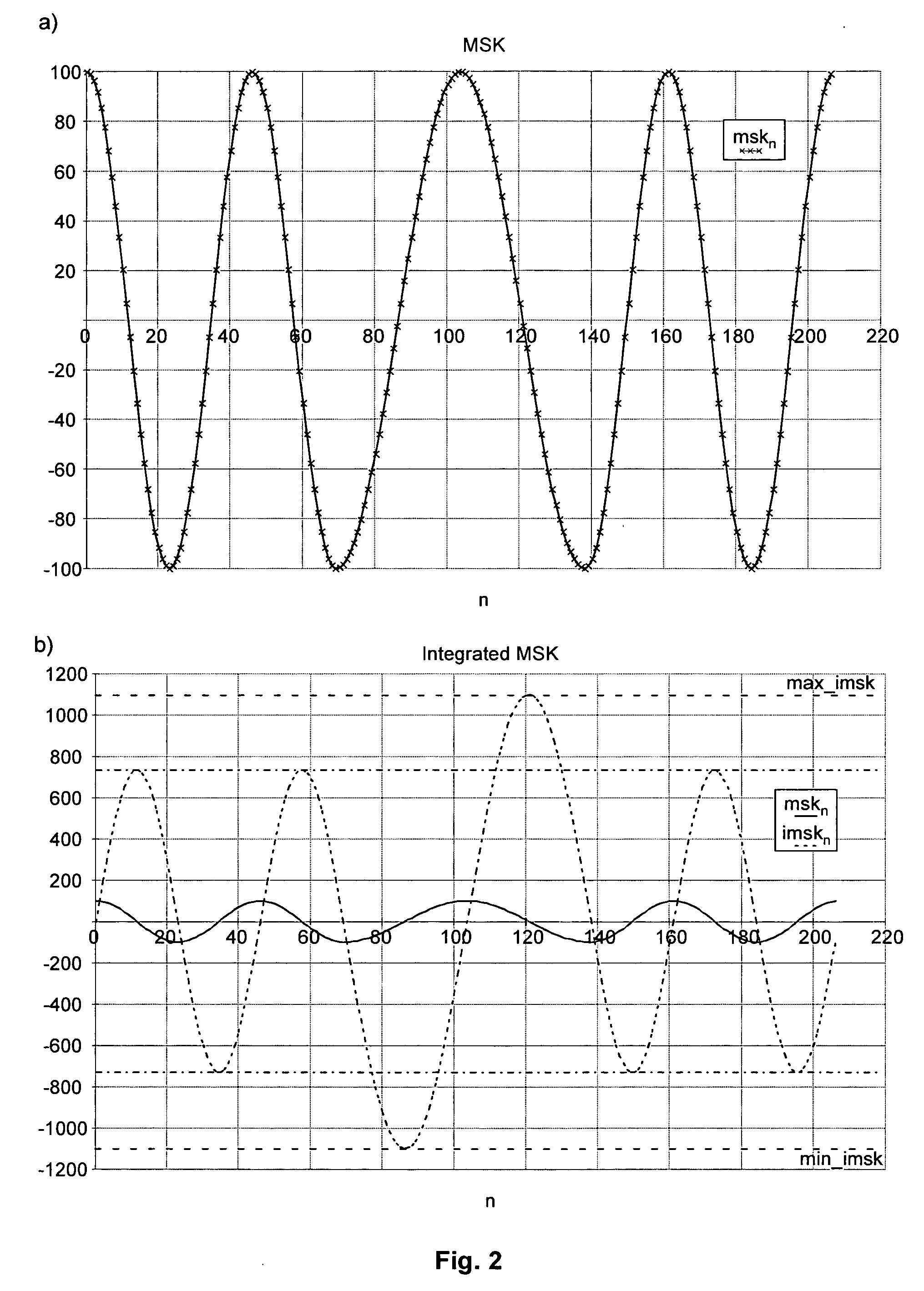Wobble demodulation for high density optical recording media
a wobble technology, applied in the field of wobble demodulation for high density optical recording media, can solve the problem that the method is susceptible to amplitude disturbance from the recording medium, and achieve the effect of sufficient reliable wobble demodulation and reduced implementation cos
- Summary
- Abstract
- Description
- Claims
- Application Information
AI Technical Summary
Benefits of technology
Problems solved by technology
Method used
Image
Examples
Embodiment Construction
[0041] In the FIGS. 1 to 4 instead of the functions fi(t) the sampled functions fin are shown. The functions were sampled at 66 MHz with a quantisation of 100, i.e. the theoretical value range of the input signal is multiplied by 100 and distributed evenly over the available sampling values.
[0042] In part a) of FIG. 1 a monotone wobble mwn in a wobble signal is shown. Part b) of the figure shows an integrated monotone wobble imwn in comparison to the monotone wobble mwn together with the corresponding maximum value max_imw and minimum value min_imw.
[0043]FIG. 2 shows in part a) an MSK mark mskn in a wobble signal and in part b) an integrated MSK mark imskn in comparison to the MSK mark mskn together with the corresponding maximum value max_imsk and minimum value min_imsk.
[0044] A sawtooth wobble sw1n representing a “1” is shown in FIG. 3a). The corresponding integrated sawtooth wobble isw1n together with the respective maximum value ymaxi1—1 and minimum value ymaxi1—2 is depicted...
PUM
| Property | Measurement | Unit |
|---|---|---|
| frequency | aaaaa | aaaaa |
| wobble frequency | aaaaa | aaaaa |
| shape | aaaaa | aaaaa |
Abstract
Description
Claims
Application Information
 Login to View More
Login to View More - R&D
- Intellectual Property
- Life Sciences
- Materials
- Tech Scout
- Unparalleled Data Quality
- Higher Quality Content
- 60% Fewer Hallucinations
Browse by: Latest US Patents, China's latest patents, Technical Efficacy Thesaurus, Application Domain, Technology Topic, Popular Technical Reports.
© 2025 PatSnap. All rights reserved.Legal|Privacy policy|Modern Slavery Act Transparency Statement|Sitemap|About US| Contact US: help@patsnap.com



